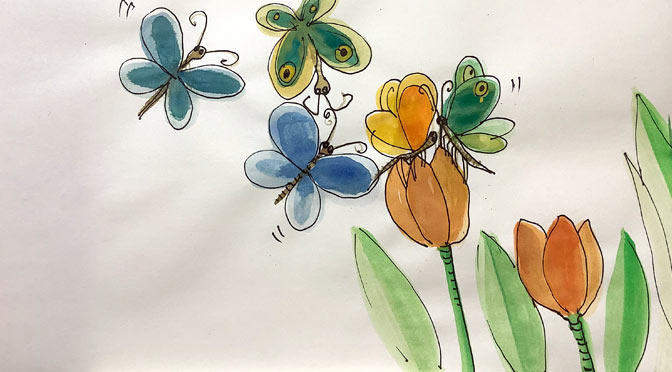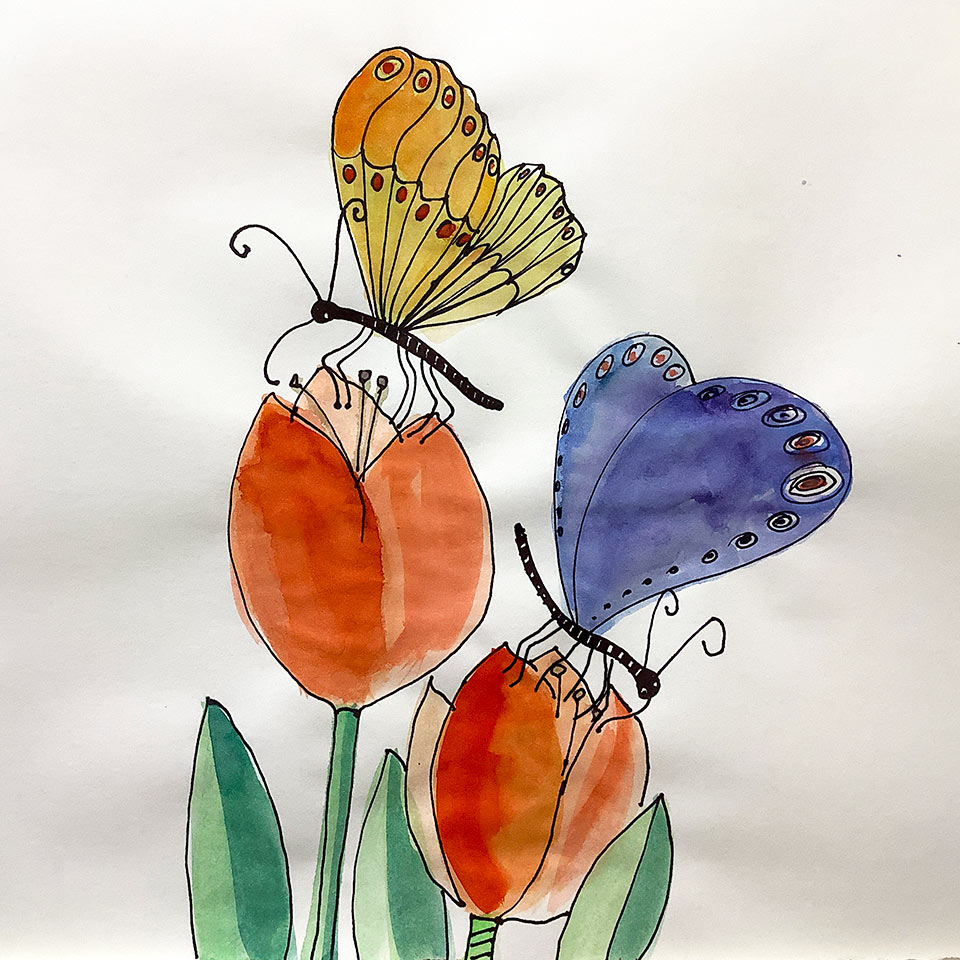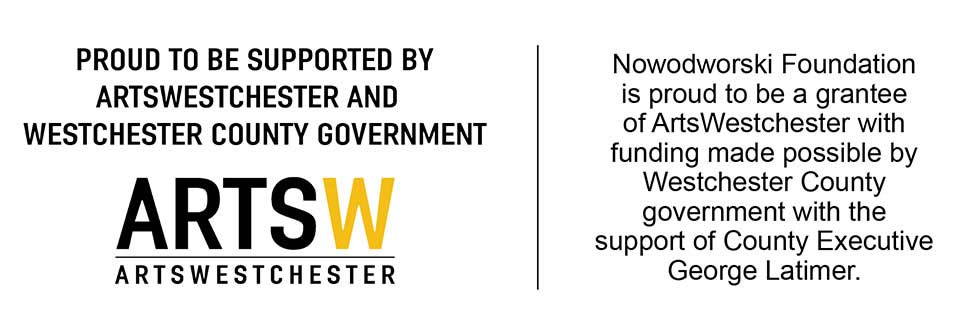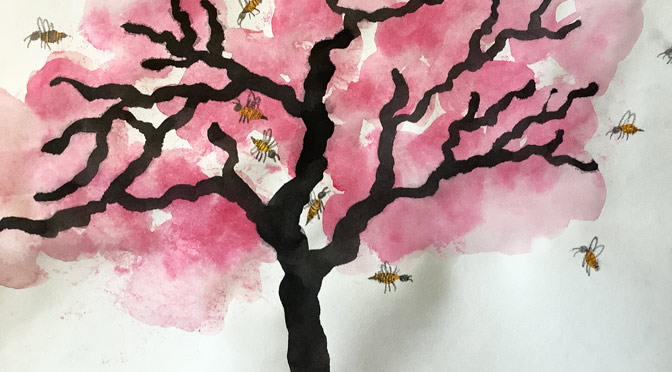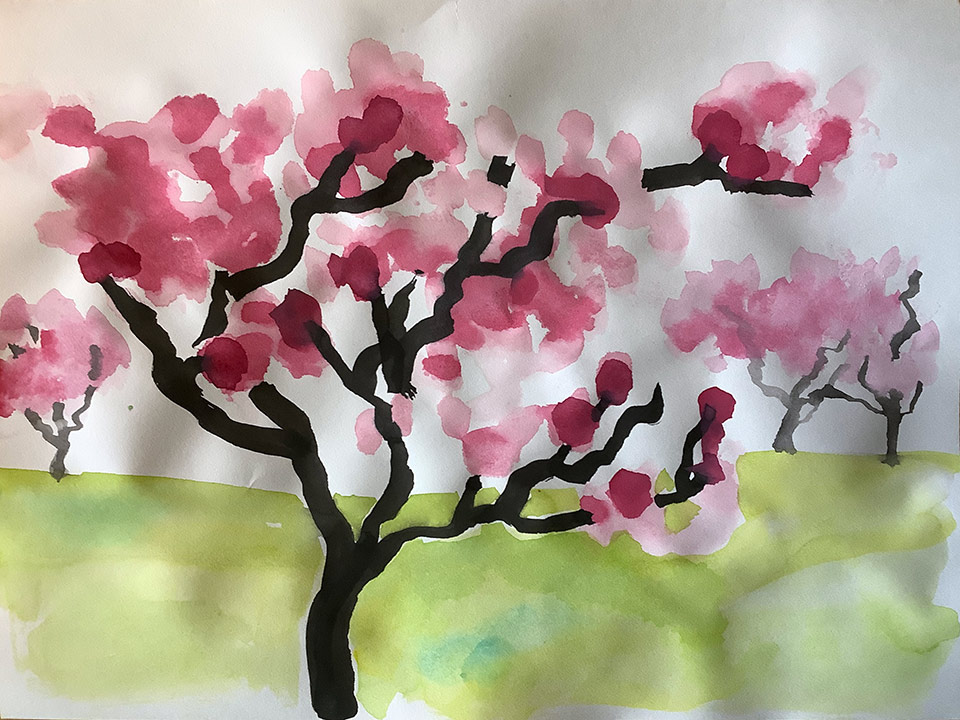POLLINATORS IN ACTION – Butterflies
Wednesday, April 10th at 5:00 PM. To sign up for this program send an email to office@sitenf.org with the note WORKSHOP in the subject line. We will email you the ZOOM ID and password.
Art supplies:
- Watercolor or water-based paint
- Sturdy light plain paper
- Brushes
- Black thin marker
- Container of water
- Paper towel (few pieces)
- Plate for color mixing
- Newspaper or table covering (optional but recommended)
“People of all ages watch the brilliantly colored insects with awe and wonder at Butterflies in the Garden. What many don’t realize is that while we value butterflies for their beauty, they also play an important role in the ecosystem. Along with bees, birds and various other insects, they help flowering plants reproduce.
Birds and insects are critical pollinators; in fact, more than 80 percent of land plants are pollinated by animals such as butterflies. Pollen sticks to the bodies of pollinators when they feed on nectar, a sugary fluid produced by flowering plants to attract pollinators. Flowers benefit when they are visited by many pollinators, so they have evolved ways to attract birds and bees. The bright colors and showy petals of flowers serve as advertisements to pollinators promising rich nectar within.
Bees do most of the work of cross-pollination, but the contribution of birds and butterflies can’t be dismissed. In fact, scientists were recently surprised by how much butterflies contributed to the pollination of cotton fields in south Texas. In an article published in Science, researchers estimated butterflies contributed $120 million-worth of pollination to cotton farmers.
Butterfly populations are in decline across the world, primarily due to habitat loss, and not only cotton fields could suffer if species are lost. “Butterflies are important indicators of the health of the environment,” says O’Connell. “Healthy ecosystems with large native plant populations attract butterflies. You know something has gone very wrong in a location that butterflies avoid.” “Butterflies are also part of the food chain. Both caterpillars and butterflies are important food sources for many creatures, especially birds,” O’Connell continues. “And they have intrinsic value as part of the natural world.” —fwbg.org

